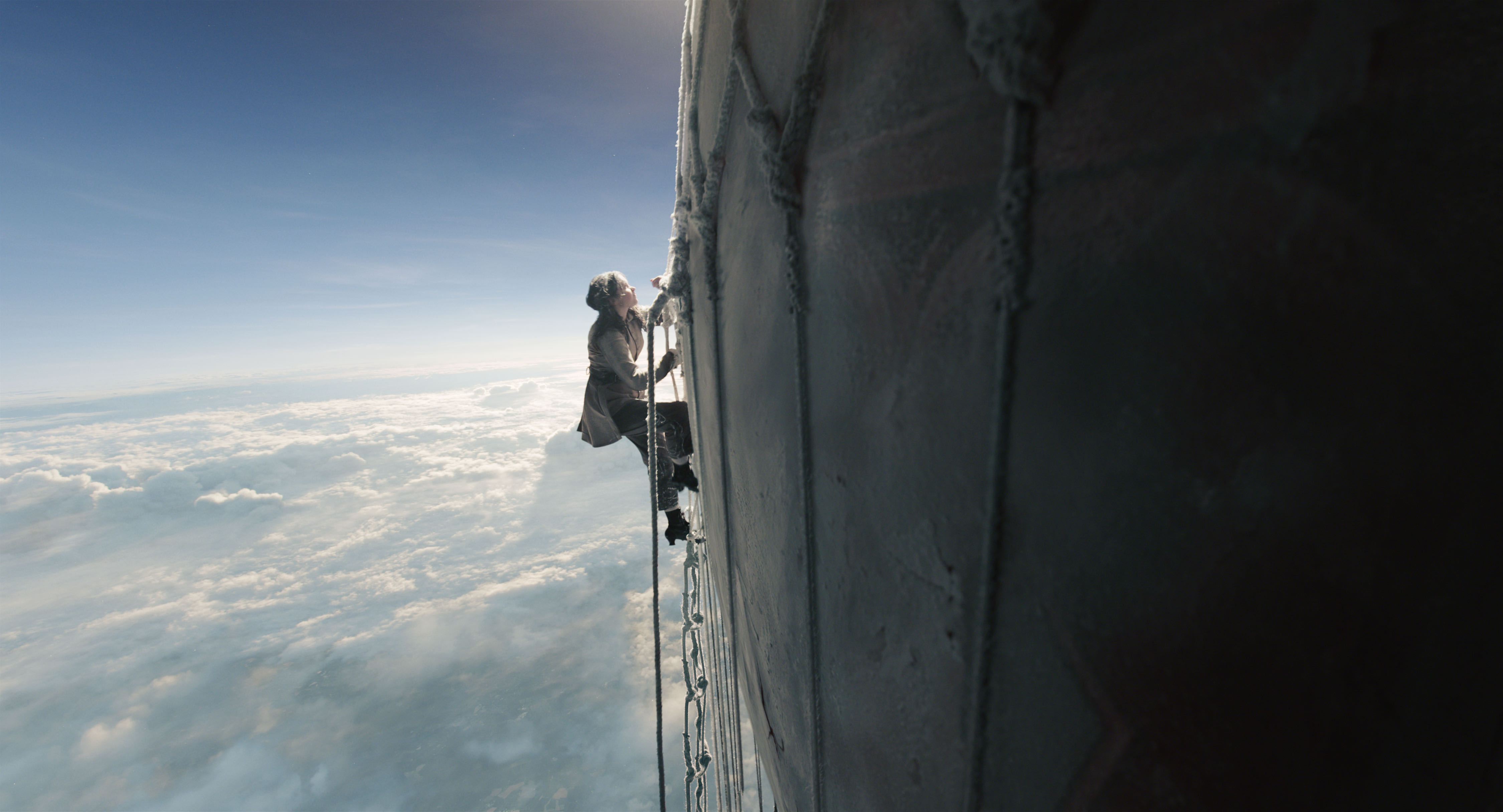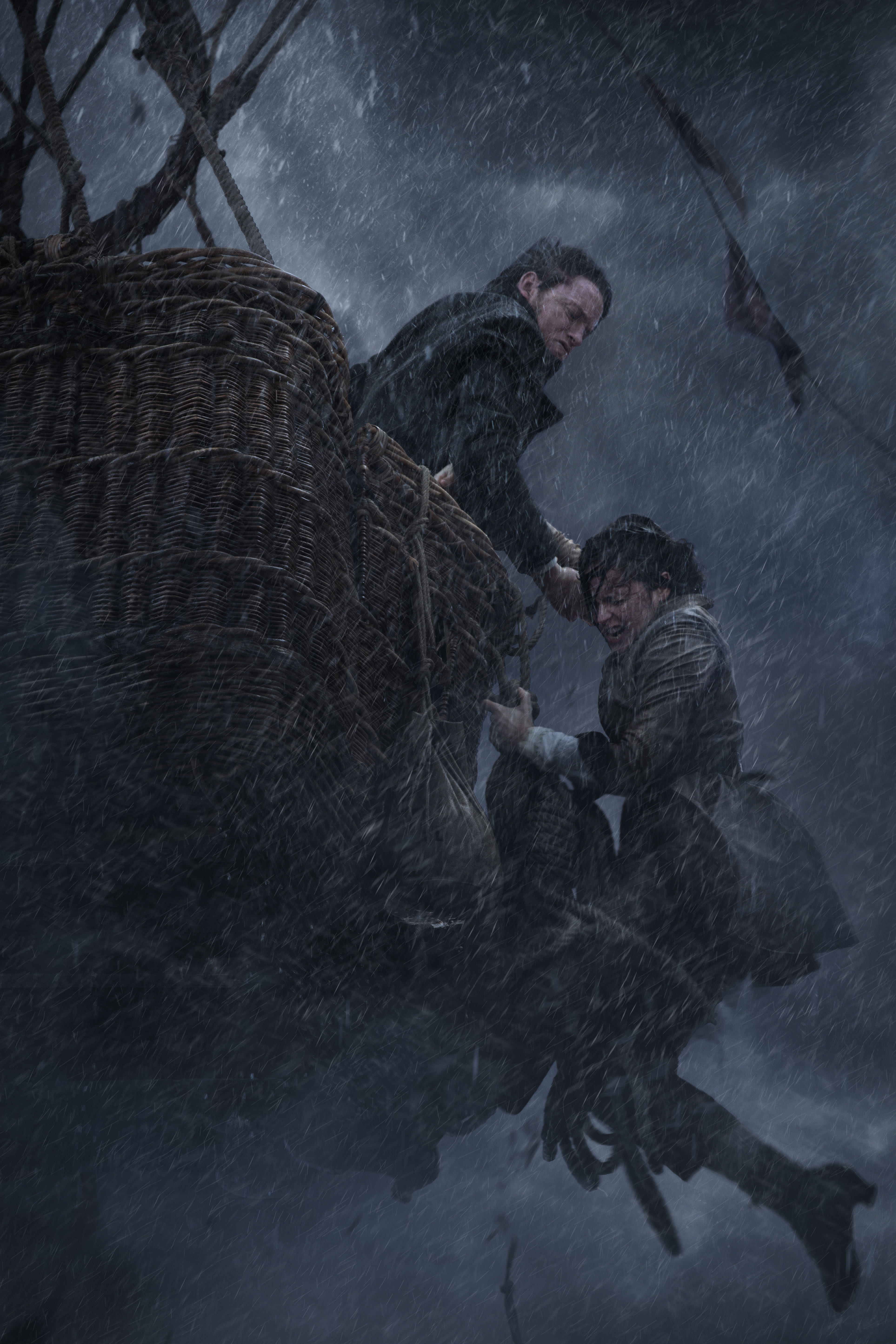Real-life 'Aeronauts': the true stories of high-altitude balloonists
The movie is inspiring a new generation of balloon enthusiasts.
Though "The Aeronauts," a new Amazon Prime movie about high-altitude ballooning, is fictional, it's attracting new people to this field of aviation, according to a curator at the Smithsonian National Air and Space Museum.
The film takes place in the 1860s, when ballooning was the only way people could get up that high. But the 20th century introduced the airplane, which soon took over the public's imagination and changed how people thought of flight. By the 1960s, aviation took another leap as the first crewed spacecraft launched.
In "The Aeronauts," we get a taste of the excitement from 160 years ago by following a high-altitude flight by real-life scientist James Glaisher and fictional balloon pilot Amelia Wren, who was based on other woman balloonists of the era.
Related: See more amazing photos of StratEx's near-space dive

The movie shows Wren performing a show before spectators as Glaisher frets about getting the balloon launch accomplished safely and swiftly. As time goes on, the characters take scientific measurements of their environment, observe the flight of moths from on high and experience firsthand some of the dangers of ballooning, such as low oxygen and extreme cold.
Tom Paone, curator of the Lighter Than Air collection at the Smithsonian's National Air and Space Museum, said children have been showing more interest in his work since the movie came out. However, "I am humble enough to realize that many 10-year-olds are [usually] not coming for the balloons," he joked. "They come for the [Blackbird] SR-71. I've accepted that in life."
Paone did have some small critiques about how the movie portrayed ballooning techniques. (We will not discuss them here, to avoid spoilers. But watch for Wren's dramatic solution for handling the extreme cold late in the movie.) However, despite those minor shortcomings, he said the film stayed true to the spirit of the excitement of the age. He also spoke briefly about the history of balloons, including the exploits of the real-life Glaisher.
Get the Space.com Newsletter
Breaking space news, the latest updates on rocket launches, skywatching events and more!
Glaisher was a British astronomer and meteorologist who insisted on bringing heavy scientific instruments with him on balloons to see what was up there. He used these instruments to complete observations such as measuring the chemical composition of the air, its temperature and its pressure, according to Smithsonian Magazine. Glaisher and co-pilot Henry Tracey Coxwell broke the world record for altitude on Sept. 5, 1862, which forms the basis of the flight in "The Aeronauts."
- Want to Try Amazon Prime? Sign up for a free 30-day trial here.

The real-life Glaisher passed out before he could record the top altitude with his instruments, but various sources estimated that he exceeded 30,000 feet (9,000 meters). Luckily, he and Coxwell made it to the ground safely — something that was not a guarantee, as many balloonists of the era died in the open-air basket that he used to break the record, Paone said.
The spherical, closed basket didn't really come to the forefront in ballooning until the 1930s, and it was popularized by balloonist Auguste Piccard. The highest flight of the 1930s was Explorer II, which included a pressurized balloon and a high-tech balloon with "rubberized fabric, impregnated with the rubber to make the gas as tight as possible," Paone said. The project, a joint mission of the U.S. Army Air Corps and National Geographic, succeeded in sending Albert W. Stevens and Orvil A. Anderson to an altitude of 72,395 feet (22,066 m) on Nov. 11, 1935. Explorer II is currently in the Smithsonian's collection.
As the Space Age began in the late 1950s, some balloonists rode high in the sky while wearing pressure suits. These designs were later adapted for the first Mercury astronauts, Paone said. The most famous of these flights from the 1950s was Project Manhigh, in which the U.S. Air Force sent several balloons into the stratosphere (the layer just above the troposphere that encompasses the Earth’s surface) with humans riding in gondolas. In the highest of the three flights, Maj. David G. Simons flew to an altitude of 101,516 feet (30,942 m) on Aug. 19-20, 1957.
In the 21st century, ballooning continues on in new ways. In 2012, skydiver Felix Baumgartner famously jumped from an altitude of roughly 24 miles (39 kilometers) from a helium balloon. Two years later, Google executive Alan Eustace broke that record with a jump from 25.7 miles (41.4 km). Both Baumgartner and Eustace used advanced materials (such as polyethylene) in their pressure suits and balloons to accomplish these incredible feats, Paone said.
Paone added that, in his opinion, anyone wanting to break these height records will have to develop balloons with even lighter materials. But these balloons would have to be strong enough to support the mass of the gas and any people underneath. "Otherwise, there's not much more you can do," Paone said.
- Skydiver Goes Supersonic in Record-Breaking 'Near-Space Dive'
- World's Highest Skydive! Daredevil Makes Record-Breaking Supersonic Jump
- '14 Minutes from Earth' Highlights Perils of Death-Defying Skydive
Follow Elizabeth Howell on Twitter @howellspace. Follow us on Twitter @Spacedotcom and on Facebook.

Join our Space Forums to keep talking space on the latest missions, night sky and more! And if you have a news tip, correction or comment, let us know at: community@space.com.

Elizabeth Howell (she/her), Ph.D., was a staff writer in the spaceflight channel between 2022 and 2024 specializing in Canadian space news. She was contributing writer for Space.com for 10 years from 2012 to 2024. Elizabeth's reporting includes multiple exclusives with the White House, leading world coverage about a lost-and-found space tomato on the International Space Station, witnessing five human spaceflight launches on two continents, flying parabolic, working inside a spacesuit, and participating in a simulated Mars mission. Her latest book, "Why Am I Taller?" (ECW Press, 2022) is co-written with astronaut Dave Williams.









